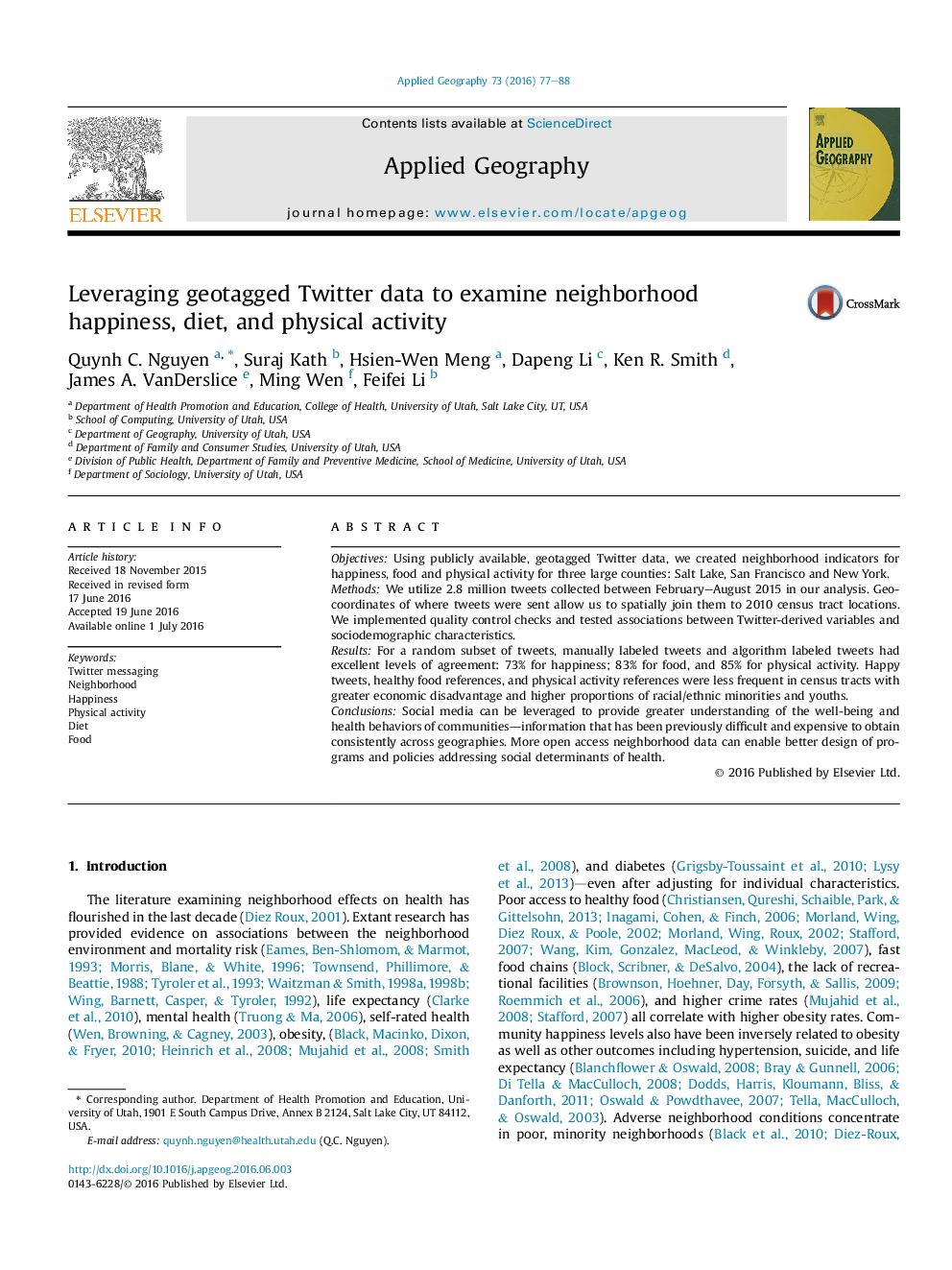| Article ID | Journal | Published Year | Pages | File Type |
|---|---|---|---|---|
| 83133 | Applied Geography | 2016 | 12 Pages |
•We constructed novel neighborhood characteristics from geotagged Twitter data.•We estimated census tract indicators for happiness, diet and physical activity.•Manually labeled- and algorithm-labeled tweets had excellent levels of agreement.•Twitter-derived variables correlated with tract sociodemographic characteristics.•Social media is a Big Data resource for cost-efficient neighborhood characterization.
ObjectivesUsing publicly available, geotagged Twitter data, we created neighborhood indicators for happiness, food and physical activity for three large counties: Salt Lake, San Francisco and New York.MethodsWe utilize 2.8 million tweets collected between February–August 2015 in our analysis. Geo-coordinates of where tweets were sent allow us to spatially join them to 2010 census tract locations. We implemented quality control checks and tested associations between Twitter-derived variables and sociodemographic characteristics.ResultsFor a random subset of tweets, manually labeled tweets and algorithm labeled tweets had excellent levels of agreement: 73% for happiness; 83% for food, and 85% for physical activity. Happy tweets, healthy food references, and physical activity references were less frequent in census tracts with greater economic disadvantage and higher proportions of racial/ethnic minorities and youths.ConclusionsSocial media can be leveraged to provide greater understanding of the well-being and health behaviors of communities—information that has been previously difficult and expensive to obtain consistently across geographies. More open access neighborhood data can enable better design of programs and policies addressing social determinants of health.
